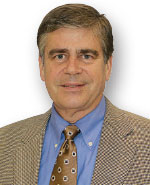Understanding the complex workings of Stomata
Stomata are simple structures defined as a pore and accompanying guard cells. Occupying less than 1 percent of the leaf surface, stomata are gatekeepers between resources a plant needs, like air, water and light, and regulate the release of some of those same resources and byproducts. Stomata impact photosynthesis, respiration and stress (temperature and moisture). But behind their physical mask of simplicity lay the plant’s complex workings.
Stomata arose some 400 million years ago. However, stomata density has changed in response to atmospheric levels of carbon dioxide (CO2). When Earth’s atmosphere was high in CO2 the stomata density of plants was low. But as atmospheric levels decreased stomata density rose.
Stomata on turfgrass plants respond to light, opening with sunrise and closing at sunset. Stomata open to allow CO2 to enter the leaf. The CO2 is fixed in the mesophyll cells by an enzyme (known as rubisco) to a five-carbon compound (ribulose-1,5-bisphosphate) as part of the photosynthetic reaction. The important thing to remember is the enzyme that fixes CO2 needs a lot of CO2. Thus the stomata need to be wide open. The downside to wide open stomata is increased water loss (transpiration).
So stomata of cool-season turfgrasses have decisions to make. The plant needs to capture and store energy via photosynthesis, however, excessive water loss through transpiration can result in plant injury or death. None of the options are ideal, but the turfgrass plant often will close stomata to reduce moisture loss. One result is that the turf’s temperature rises due to lack of transpirational cooling.
Another is that the plant’s photosynthetic efficiency tanks. When the stomata close, CO2 levels drop and oxygen (O2) levels increase (byproduct of photosynthesis). This imbalance in CO2/O2 results in an efficiency decrease because oxygen is now being fixed by our enzyme (rubisco) to that five-carbon compound instead of carbon dioxide. This is called photorespiration.
An analogy is a 427 eight-cylinder big block engine I would like to put into my ’69 Firebird (see December’s Golfdom). When the right fuel mixture is being provided (in this case a high CO2:O2 ratio), the engine is firing on all eight cylinders. However, when the stomata close, our eight-cylinder engine is now firing on only four cylinders because the fuel mixture has changed to a higher O2 ratio. Staying with my car engine analogy, high temperatures exasperate the problem by making oxygen more soluble, causing even a greater degree of engine misfires. Photorespiration occurs under summertime conditions.
What does this mean for warm-season turfgrasses? Warm-season turfgrasses have an additional process called the C4 pathway, where an enzyme called Phosphoenolpyruvate carboxylase has a high affinity for carbon dioxide, which brings it through a series of processes to the five-carbon compound mentioned previously. This process, however, requires a lot of energy in the form of radiant (light) energy.
This process is valuable during periods of limited water and high light intensities. Due to the ability to fix CO2, warm-season turfgrasses function with a narrower stomata during periods of high transpiration (allowing for lower water loss) and do not undergo photorespiration.
We can observe the impact of photorespiration visually on a golf course with a bermudagrass fairway and/or approach that abuts a creeping bentgrass green. In summer, with high temperatures, high light intensities and high transpiration rates, creeping bentgrass is at least 50 percent less competitive than bermudagrass due to photorespiration alone. The result is often bermudagrass encroaching into the creeping bentgrass. Conversely, if the conditions are much cooler, with cloudy, wet weather, we see the reverse.
This speaks broadly to the difficulty in predicting a turf outcome for all situations involving the manipulation of stomata. How pigments, anti-transpirants or surfactants impact plant responses by affecting stomata behavior is complex. Too many factors — climate, weather, soil and turfgrass species — make simple predictions difficult.









